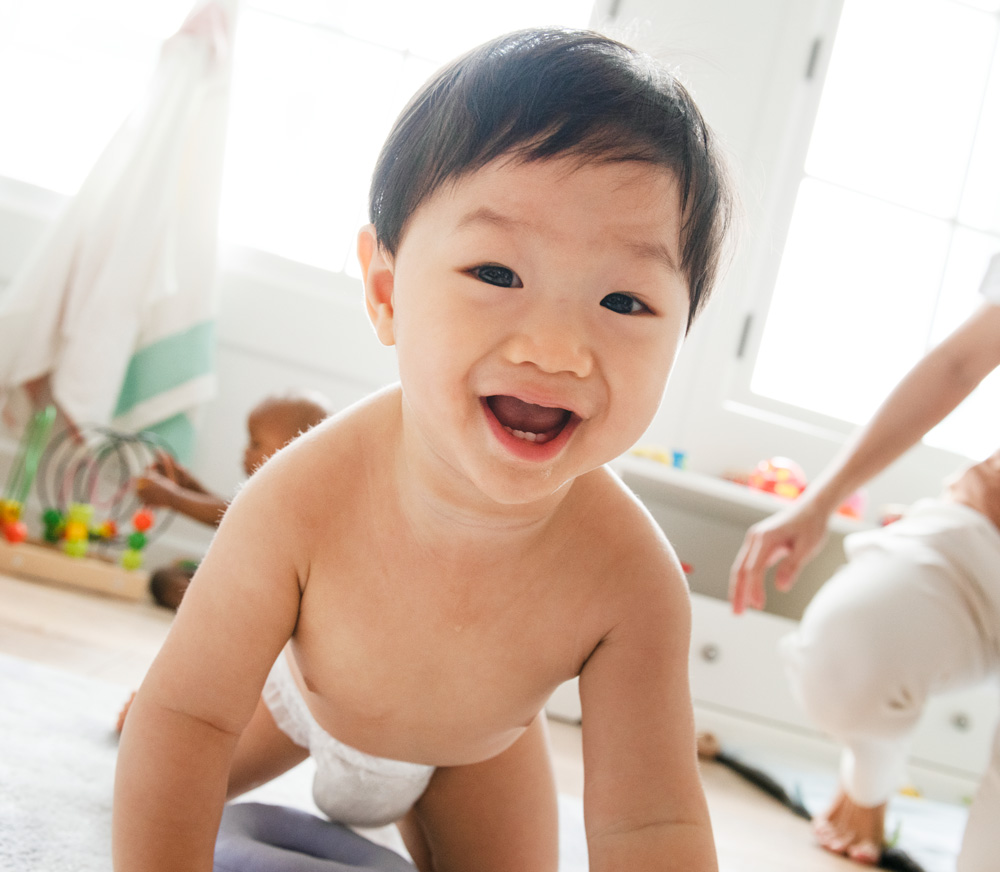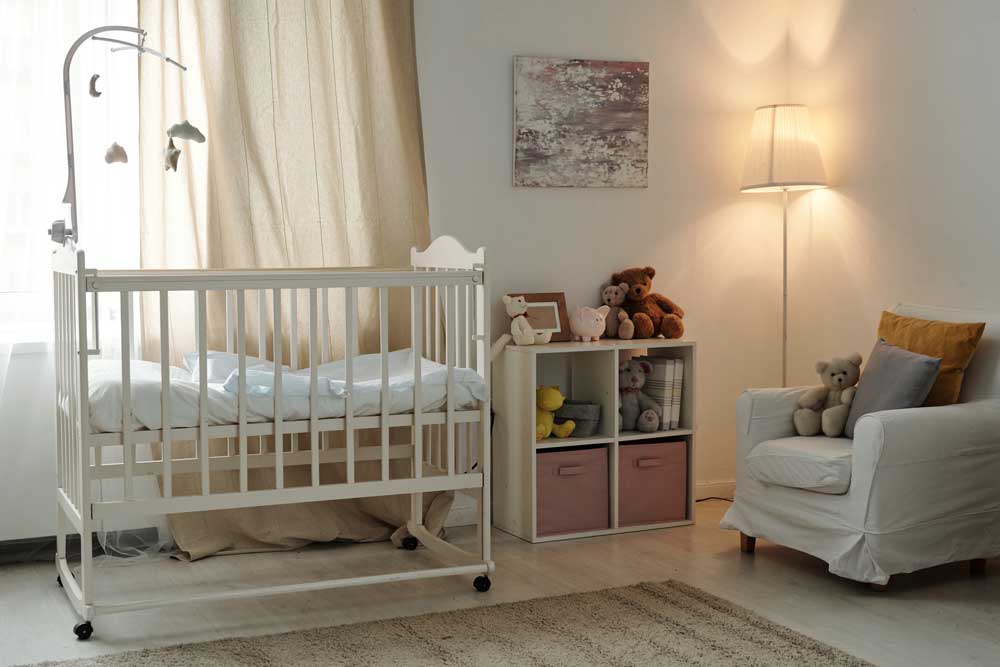
Safety First: Baby Furniture Safety Standards and Tips
Preparing a safe and nurturing environment for your baby is a top priority for parents. When it comes to baby furniture, ensuring safety is paramount. Baby furniture, including cribs, changing tables, high chairs, and dressers, must meet strict safety standards to protect your little one from potential hazards.
In this article, we will delve into the safety standards and tips that every parent should be aware of when selecting and using baby furniture.
Understanding Baby Furniture Safety Standards
The Importance of Safety Standards
For KIKI & SEBBY, our SBROUT crib, cot, toddler chair, and mattress are British Standard certified. Baby furniture safety standards are crucial to ensure that the products you use for your baby are free from hazards and designed to minimize risks.
These standards are put in place by regulatory bodies to protect infants and toddlers from accidents and injuries associated with their use.
Baby Furniture Safety Tips
In addition to choosing baby furniture that meets safety standards, parents should follow these essential safety tips to create a safe environment for their child.
Check for Recalls
Regularly check for recalls related to your baby furniture. Manufacturers occasionally issue recalls for safety reasons, and it’s important to stay informed. Register your baby furniture with the manufacturer to receive recall notifications.
Use Safety Straps and Harnesses
Always use safety straps and harnesses when they are provided with baby furniture. This includes high chairs, changing tables, and strollers. Ensure that the straps are properly secured and that your child is safely buckled in.
Monitor Weight Limits
Pay attention to weight limits specified by the manufacturer for baby furniture, such as changing tables, cribs and cots. Avoid placing items on or inside the furniture that exceed these weight limits.
Anchor Furniture
Secure heavy furniture like dressers, bookshelves, and changing tables to the wall to prevent tipping. Use anti-tip devices or wall anchors to ensure stability.
Check for Sharp Edges and Corners
Examine baby furniture for sharp edges, corners, or protruding hardware. These can pose injury risks. Use corner protectors and edge guards to cover sharp areas.
Regularly Inspect Baby Furniture
Routinely inspect your baby furniture for any loose or missing parts, splinters, or damage. Ensure that screws, bolts, and fasteners are tightened properly.
Safe Placement of Cribs
Position your baby’s crib away from windows, blinds, and curtains with cords to prevent strangulation hazards. Avoid placing the crib near radiators, heaters, or direct sunlight.
Cribs: A Focus on Safety
Cribs are a centerpiece of your baby’s sleep environment, and ensuring their safety is crucial. Let’s dive into specific safety considerations for cribs.
- Crib Mattress Fit – Ensure that the crib mattress fits snugly with no gaps between the mattress and the crib’s sides. A properly fitting mattress reduces the risk of entrapment.
- Mattress Height Adjustment – Adjust the crib mattress to the appropriate height based on your baby’s age and developmental stage. Lower the mattress as your baby grows and becomes more mobile to prevent climbing out.
- Crib Bumper Pads – Avoid using crib bumper pads. They can pose suffocation and entanglement hazards, and they have been associated with an increased risk of Sudden Infant Death Syndrom (SIDS).
- Drop-Side Cribs – Do not use drop-side cribs. These cribs have been banned in the United States due to safety concerns. Ensure that all four sides of the crib are fixed and cannot be moved.
Changing Tables: Safe Diaper Changes
Changing tables are essential for diapering and dressing your baby. Here are safety tips to consider:
- Use a Safety Strap – Always use the safety strap or harness provided with the changing table. Keep one hand on your baby at all times while using the changing table.
- Supervision – Never leave your baby unattended on the changing table, even for a moment. Keep all diapering supplies within arm’s reach to avoid the need to step away.
- Secure the Table – Ensure that the changing table is stable and secure. If it has wheels, lock them in place during use. Regularly check for loose or missing hardware and tighten as needed.
High Chairs: Safe Mealtime
High chairs are where your baby will begin to explore solid foods. Safety is key during mealtime:
- Harness Use – Always secure your child with the provided safety harness while they are seated in the high chair. Make sure the harness is correctly fastened, and your child is safely strapped in.
- Check for Stability – Ensure that the high chair is stable and has a wide base to prevent tipping. Avoid placing the high chair near edges or countertops where your child could push off or reach potentially hazardous items.
- Keep Away from Hot Foods and Liquids – Be cautious when serving hot foods and liquids to your child while they are in the high chair. Make sure hot items are out of your child’s reach and cannot be accidentally spilled.
- Regular Cleaning – Regularly clean the high chair, including the seat, tray, and harness, to remove any food residue or potential hazards. Follow the manufacturer’s cleaning instructions.
Dressers and Storage Units: Preventing Tip-Overs
Dressers and storage units are essential for organizing your baby’s clothes and supplies. To ensure safety, consider the following:
- Anchor to the Wall – Secure heavy furniture like dressers and storage units to the wall to prevent tip-overs. Use anti-tip devices or wall anchors to ensure stability.
- Weight Distribution – Store heavier items in the lower drawers or shelves to maintain stability. Avoid placing heavy objects on top of dressers, as this can make them top-heavy and prone to tipping.
- Keep Out of Reach – Store potentially hazardous items like cleaning supplies, small objects, or medications out of your child’s reach. Use safety latches on drawers and cabinet doors to prevent access.
Conclusion
Ensuring the safety of your baby is a top priority, and baby furniture plays a significant role in creating a secure environment. Understanding and adhering to baby furniture safety standards is crucial, as it ensures that the products you use have been tested and meet strict safety guidelines.
Looking for baby furniture that grows with your child? Look no further! Our SBROUT®, the versatile and sustainable 6-in-1 Baby Sleep Habitat System is exactly what you are looking for. This modular furniture has multiple uses – from baby crib to mini cot.
What’s even better is that our sustainable and versatile baby furniture is not only designed for modern spaces, it is also safety certified with BS EN 716-1:2017 and BS EN 1130. Truly, our modular furniture is the perfect addition to your baby’s nursery.

Understanding Infant Cues: Decoding Your Baby’s Body Language









